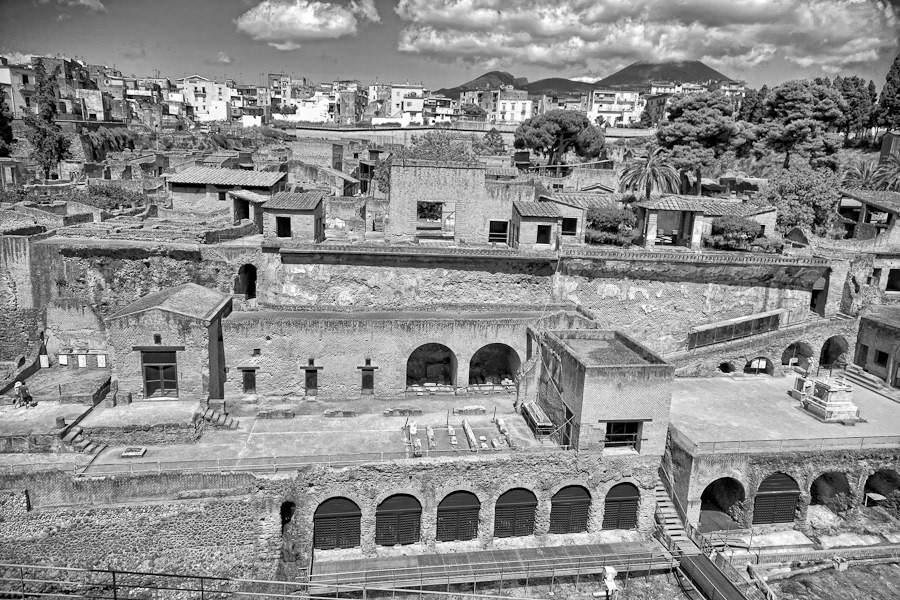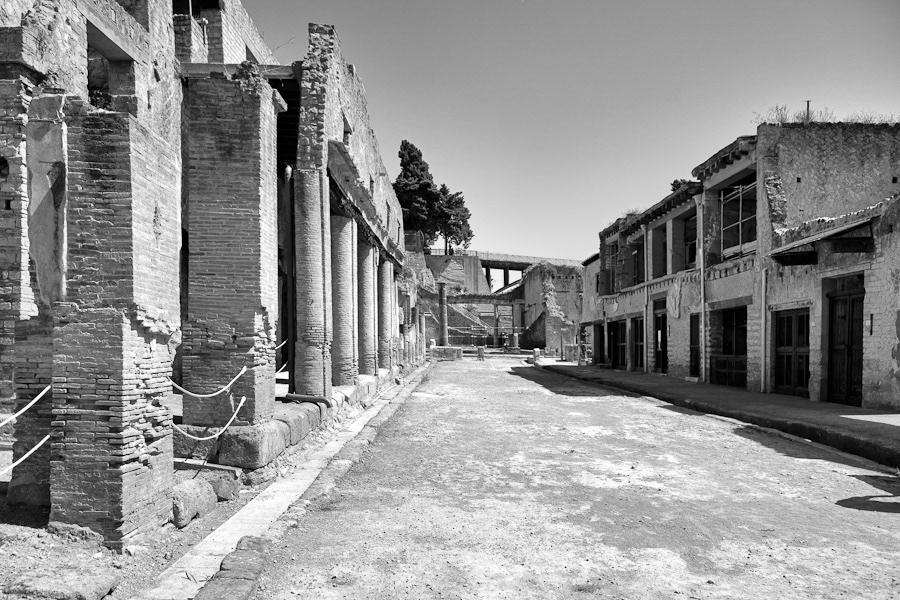Herculaneum
In the Shadow of Mount Vessuvius
On the afternoon of August 24, AD79, while Pompeii was being destroyed by tons of volcanic ash from Mount Vesuvius, the six hundred year old Roman city of Herculaneum was slowly buried in molten lava. Discovered in 1709 by workers digging a well, excavation of Herculaneum began in 1738 by Spanish engineer Rocque Joaquin de Alcubierre. Unlike Pompeii, where ash-encased bodies were discovered, it was thought that the 5,000 residents of Herculaneum had successfully evacuated the city. In 1981, the first of more than 300 skeletal remains were discovered, many in the boat houses and along the sea shore where they had been waiting to be rescued.













